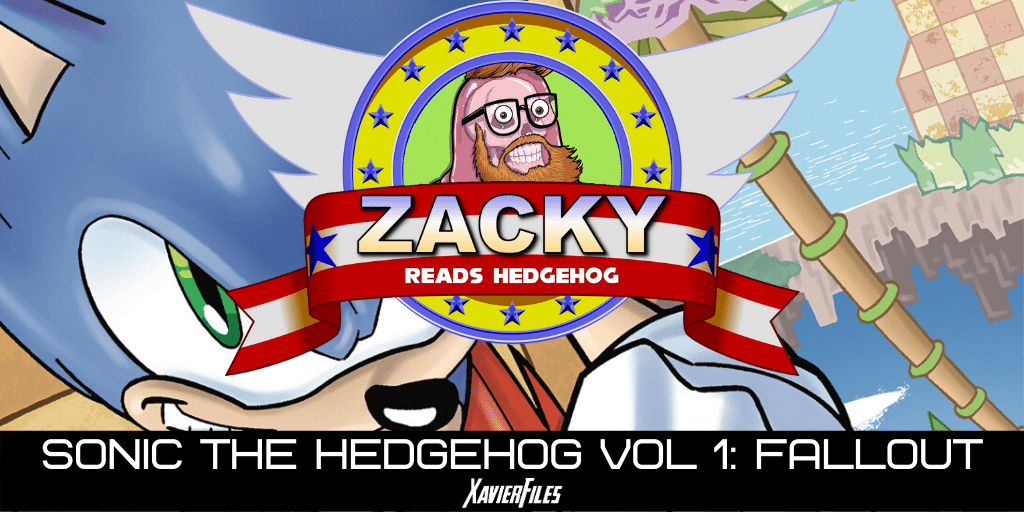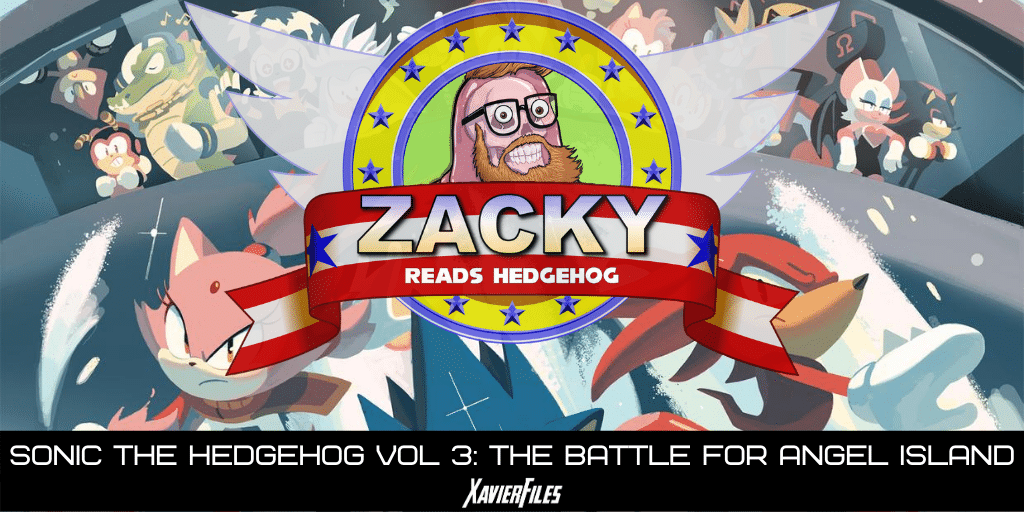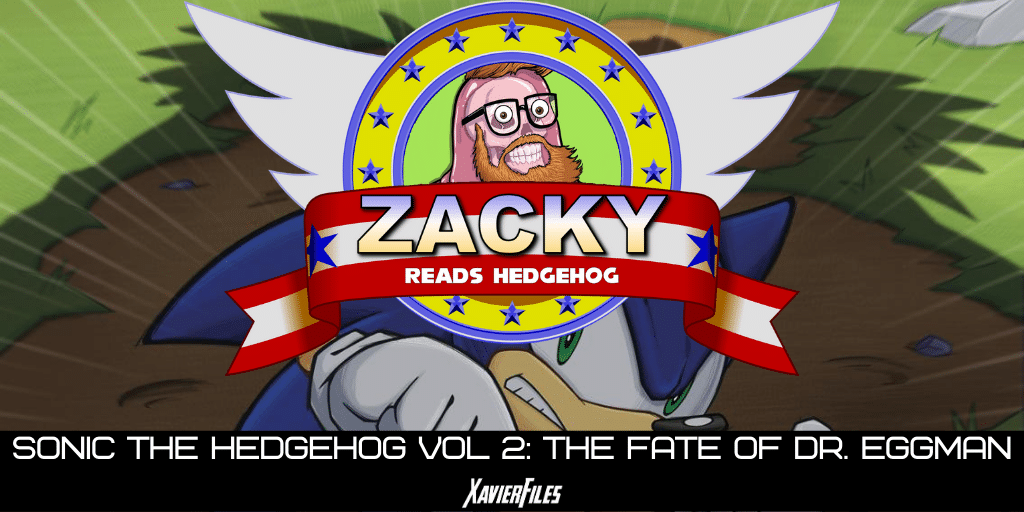It is 1993, I am 2 years old, my mother is on bedrest with her only solace being the Sega Genesis my father should not have spent money on. We were poor, not that I understood what “poor” was, and honestly, not that I remember any of this. I remember the Genesis, I’ve seen home videos of these moments, I’ve been told stories — modern, banal legends — but these are more constructed thoughts than true memories.
Regardless, it is still 1993. My mother is still very pregnant and very much playing Genesis. We have four games: Terminator 2: Judgment Day, Barney’s Hide and Seek, R.B.I. Baseball ’94 and the game that came with the system. I remember the “NOT FOR RESALE” label displayed on the cartridge clear as day. It’s Sonic The Hedgehog. I sit on the bed, hypnotized by the blue blur racing across the screen while my mother, younger than than I am today, rolls through Green Hill Zone like she does every day. I can hear the clipping voices harmoniously singing “Say-Guh” as the television glows in front of me. In that moment, nothing else matters except hot, nasty, badass speed.

Sonic The Hedgehog holds a strange place in my heart. There’s nostalgia sure, but it’s a curious nostalgia. I think it was the moment I saw the first advertisement for Shadow The Hedgehog (the video game where Sonic’s dark reflection rides a motorcycle, respects the Second Amendment and says “damn,”) that I realized at 14, I wasn’t in line with what the Sonic fandom wanted. I didn’t make a Sonic OC, I didn’t read about Ken Panders’ echidnas, I couldn’t muster up any enthusiasm for Sally Acorn. I wasn’t the right kind of fan, and I was OK letting it all go.
Or at least I was until earlier this year.
My 4-year-old stumbled across Sonic Dash, an infinite running mobile game with a coat of Hedgehog paint. He wasn’t very good, but he wanted to unlock Knuckles, my favorite character from back in the day. He asked dear old Dad for help. How could I say no?
Soon, I picked up the game Sonic Mania on sale and was whisked back in time. I could feel the soft glow of our outdated RCA with the wood paneling as my mother bolted through another loop. The design was playful, the music incredible, the sense of energy addicting. My son is not impressed by the 16-bit action, a sign I’m doing a bad job as a father, but we’re working on it.

All this brings us here. This is a comics website after all, and somehow Sonic is a vibrant comic book hero. Would it not be a dereliction of duty for I, a deeply lapsed Sonic enthusiast, to at least try and understand the recently rebooted universe IDW has put together?
After 24 years with Archie Comics, IDW acquired the rights to Sonic The Hedgehog in 2017 and knew the little guy needed a reboot. The franchise had gotten incomprehensibly complicated from both a continuity and legal standpoint. They wanted to tie things closer to the universe of the video games, while providing an easy jumping-on point for the literal children this franchise is aimed at. They kept writer Ian Flynn, who had done the last 130 issues for Archie, and prepped for a fast launch.
Four issues. Four weeks. All with the intention of jettisoning fans into the world of Sonic.

Though technically taking place after the game Sonic Forces, the series drops readers into a world that feels unburdened with continuity or structure. It’s like turning on an old cartoon — sure there’s stuff that came before this and all the characters already know each other, but it isn’t important. This comic assumes you know that Sonic is a fast boy with many other animal friends. Also that he is the reluctant hero of a resistance that took back the world after Eggman (always Dr. Robotnik to me) took it over and made it a dystopian hellscapea la the X-Men’s “Days of Future Past.” There are leftover robots running amok, and the local militias need help.
It is at this point I wondered aloud to myself, “Why is any of this happening?” and promptly watched every cut scene from Sonic Forces, a video game that has, beat for beat, the same ending as Avengers: Endgame. It did not assist me in my understanding of the backstory of the comic, but that felt right. Unlike your Metroids or your Zeldas, Sonic was never about looking back. It embodied forward progression, sprinting to the right side of your screen with reckless abandon. I decided to embrace this spirit and just run through this comic without regard for my sanity or reading comprehension.
The story is simple enough. Sonic, ronin-like, wanders into the town of Vista View to see it under attack from rogue Badniks. Eggman has been missing, and these Badniks seem to be acting under the control of someone else. Considering there has not been a single villain in the Sonic franchise that I could name besides Eggman, we’re going to assume it’s indirectly him for now. This question is unimportant to us, the dear reader, as Sonic decides to jump on, and spin into, the baddies, meeting up with his good friend and platonic life partner Miles “Tails” Prower. They beat up the robots, and Sonic speeds away to places unknown.
This is the structure for each of these four stories. Sonic wanders into town, introduces an old friend, beats up someone and goes on his merry way. We get hints each time about someone who is overseeing all the Badniks, but that’s a plot point for another time. If you have a vague awareness of Sonic as a concept, these characters should all be familiar. Tails is the smart one, Knuckles is tough and responsible, Amy is the girl. Flynn does enough to hint at more here, but this is all foundational work. It’s repetitive, but competent, workmanship. He knows what he is going for and executes it well.

What confounds me about all this is Sonic’s role as a reluctant warrior. His capture at the start of Sonic Forces left him imprisoned for six months, long enough for Eggman to take over the world. His friends and allies took that time to form a sophisticated underground resistance. There is a military hierarchy to their relationship now. They are no longer cheerful animals frolicking in the meadows, they are battle-hardened soldiers. They are happy to see their friend Sonic again, but perhaps they changed much faster than the hedgehog? Is the underlying guilt from his failure eating Sonic up? Is he going to come to terms with the price his friends paid, the anguish they endured while he sat in a cell? Is he trying to outrun the repercussions of his actions?
No. Probably not.
This comic isn’t interested in asking the hard questions of our hero. Like Sonic himself, the book is carefree, dashing from issue to issue without much reason or depth. The past is unimportant, it’s long behind. Dust has settled on Sonic’s history, never to be revisited.
Flynn takes time to introduce some new characters to the larger Sonic lore. Rough and Tumble are well coordinated skunk mercenaries who fill the same role as Bulk and Skull in Mighty Morphin’ Power Rangers or Pokemon’s Team Rocket. They are villains, yes, but not exactly threatening ones. More interesting is Tangle the Lemur, introduced in issue #4. She was created for this series as a “kick-butt female Sonic character who could accompany Sonic on his adventures.” And honestly? She really works for that role in a way no one else could. There are innovative uses of her stretchy tail throughout the issue and the promise of more excitement as the cast comes together. She jumps off the page in a way the other character’s don’t.

Now with this released weekly, the art team shifts each issue, and it shows. Tracy Yardley (#1) and Evan Stanley (#4) keep the feeling of speed and action going throughout their issues. There’s a weird balance to strike here, and not everyone succeeds. Jennifer Hernandez (#3) uses heavy lines and exaggerated expressions that make this feel like a children’s comic for babies. Which it is, let’s not be mistaken. This isn’t a comic aimed at me, and that’s OK. Where it suffers is making everything feel slow and heavy. Comparing this to the thin line work of Adam Bryce Thomas (#2), Hernandez’s issues feel weighed down. This may have been a stylistic choice as that issue focused on Knuckles, the slowest of these fast fast fast animals, but sandwiched between the other issues, it suffers.

This is a quick read and well executed. If I am disappointed, it is because I expected something wilder. I understand this is just the beginning of a relaunch and, having previously read the 2020 Annual, I know there is a duck witch and slime that turns animals into metal zombies coming. We’ll have to speed toward that the next time Zacky Reads Hedgehog.
Zachary Jenkins runs ComicsXF and is a co-host on the podcast “Battle of the Atom.” Shocking everyone, he has a full and vibrant life outside of all this.





